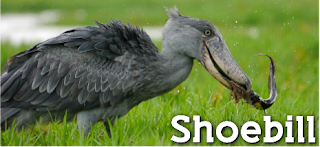Eleven days into my first tour, ever! Several things had happened; I had hiked through forests, studied birds and, observed chimpanzees and elephants, among others.
The experiences came from the different locales I visited. In retrospection, while on the bus heading back home, I explicated a list of some of the lessons I learnt while traveling.
Lessons learnt while on the road:
√ To leave my comfort zone and try new things:
If I wanted to boom in life, I had to get out of my comfort zone and embrace the unknown.
Setting off to travel, I left behind all that was familiar; my tiny bedroom, that had become "my self-made" cell, my addictions, my family and all that I regarded as the norm; and took on a world of new things.
The lesson usually was through new cultures like the tenacity of the Bakiga or the hospitality of the Batooro... New friends and foods.
All these sparked excitement, or even fear but never boredom.
√ To be patient:
Whether it was facing the long, uncomfortable bus rides, or the tiresome forest hikes, I came across several small foilings.
These defeats were actually priceless lessons in patience. In my travels, I managed to overcome them and bred resilience.
At the end of my Ugandan tour, I felt confidently capable of contending with almost anything.
√ To be humble:
For a traveler humility is unavoidable... I quickly discovered how small my footprint was in this gigantic world.
Try measuring up your footprint to that of an elephant or hippo.
I encountered kindness and generosity from total strangers while on the road.
Several kind souls offered guidance when I was lost. One, I vividly remember, offered me a free meal when my cash was tapped out.
I came to a realization of how lucky I was and how much I took for granted.
√ I learnt to never take nature for granted:
Throughout most of my tour, I explored natural beauty and promptly learnt to appreciate every natural wonder.
The beautiful, evergreen Kibale forest, the steel slopes of the Rwenzori mountains or the meandering Kazinga channel and all her jewels.
Nature in all her majesty!
√ To enjoy experiences over things:
I worked my way through some of Uganda's tourist attractions, formed strong bonds with people, learnt new skills like how to carefully track a Rhino, and created lasting memories.
And I needed very little to be happy! A pair of boots, a cap, binoculars but above all my experiences!
√ I learnt how to make friends with strangers:
Be it at Kibale forest National park or at Mweya Information center; meeting fellow travelers or exchanging stories with locals, I opened up myself to world of human interaction.
I encountered plenty of people, who were open to chatting.
And last but not least,
√ You never stop learning:
"Learning keeps us young and travel is the best teacher of all."
I explored forests and studied lots of birds among other activities; my Ugandan tour inspired a sense of wonder and discovery...
And there still is an entire world of things to do and people to meet.
All throughout my travels I never stopped learning.
Do you travel?
Image Source: Instagram
































